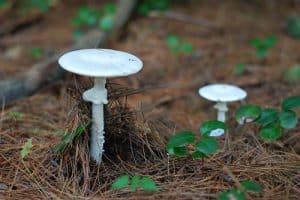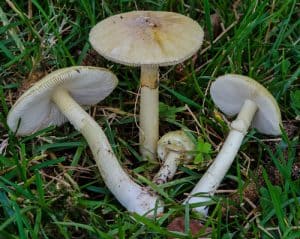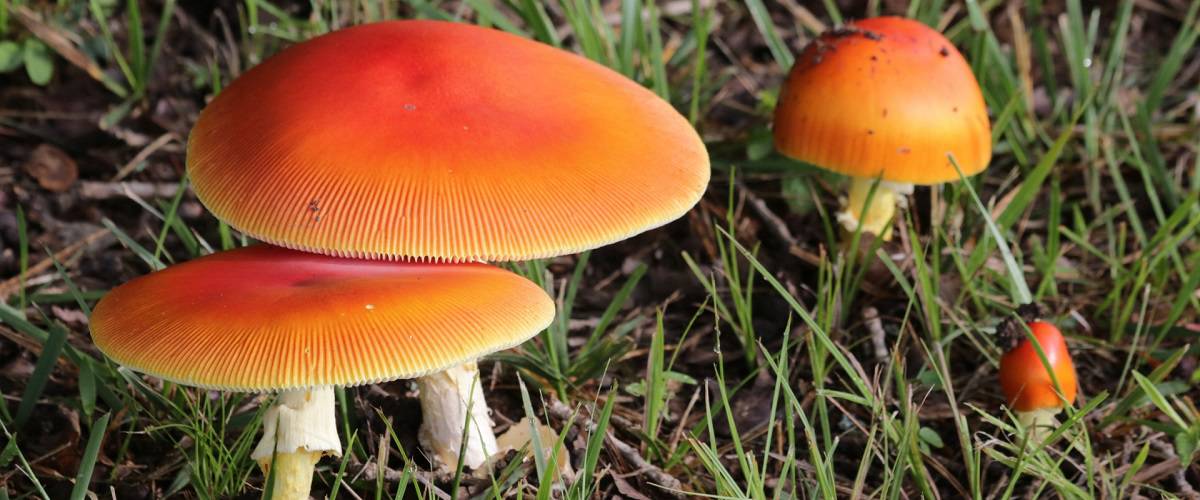Foraging is a valuable survival skill, particularly with a lost-in-the-woods scenario. Mushrooms can be a good source of nutrients, but many are dangerous. A number of folk traditions have developed over time as a way to tell if a mushroom is safe to eat or not. The problem is, they’re basically all wrong. Here are some of the most common mushroom myths, and why you shouldn’t rely on them.
Poisonous mushrooms are brightly colored

Destroying Angel Mushroom
While this is partially true, it’s by no means a rule to follow. The fly agaric is bright red/orange and is certainly poisonous, you won’t die from it. The Destroying Angel, on the other hand, is a rather boring off-white color, and will absolutely kill you. Safe to eat options like the Amanita Caesarea are also brightly colored, and eaten quite recreationally. Color means nothing in the end. This rule is likely in confusion with certain insects and animals, such as the monarch butterfly and the poison dark frog, which use their bright colors to indicate their poisonous nature.
Bugs and animals will avoid toxic mushrooms

Death Cap Mushroom
Euthanistics are extremely complicated. There’s a reason there are jobs dedicated to making sure you don’t overdose when given knock out gas for surgery. Poisons behave very differently between animals. Dogs cant eat chocolate, for example. While certain mushrooms might kill a human, they are often just fine for other creatures. Certain insects can consume the Death Cap mushroom just fine.
Poisonous mushrooms blacken silver
This may have spawned from when silver was believed to have life-bearing, magical properties. Perhaps something that would kill you would react to such. This one is just blatantly wrong. None of the known mushroom toxins have a reaction with silver.
Poisonous mushrooms taste bad
This isn’t a catch-all case, either. the poisonous Amanitas are reportedly quite tasty. The taste test is the worst way to test a poison, anyway.
All mushrooms are safe if cooked
Cooking does render certain food-stuffs edible (meats), but this is just as unreliable as the taste test. The Death Cap, for example, will not be denatured by cooking.
Poisonous mushrooms will turn rice red when boiled
Oddly specific, this rule is false. There have been reports of Laotian refugees being hospitalized after following this rule with what was presumed to be a toxic Russula mushroom.
Poisonous mushrooms have a pointed cap. Edible ones have a flat, rounded cap
I hate to keep referring back to the Death Cap, but that’s one of many, many cases where this rule is proven false. The caps help the spores travel, and have nothing to do with their toxicity.
Boletes are safe to eat
Bolete is a specific genus of mushrooms. While it’s true that most of the genus in most parts of the world are safe, there are still exceptions. The Devil’s bolete is poisonous, and the Lurid Bolete requires cooking to break down its toxins. This rule is better than the others but still unreliable.
So what can you do? The simplest solution is to invest in a mushroom identification book relevant to your area. keep this book with your camping gear, or in a bug out bag, so that it’s there when you need it most.
Bon Appétit, preppers.

